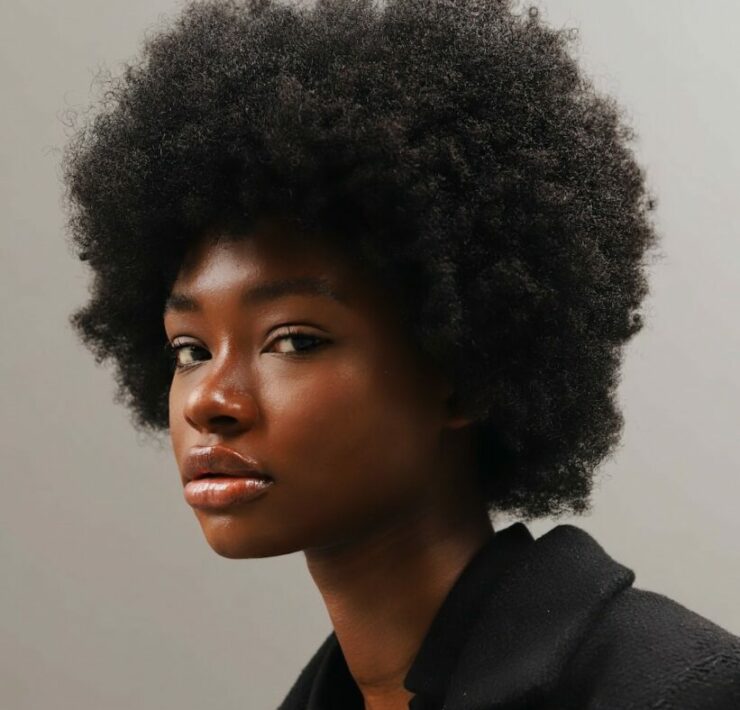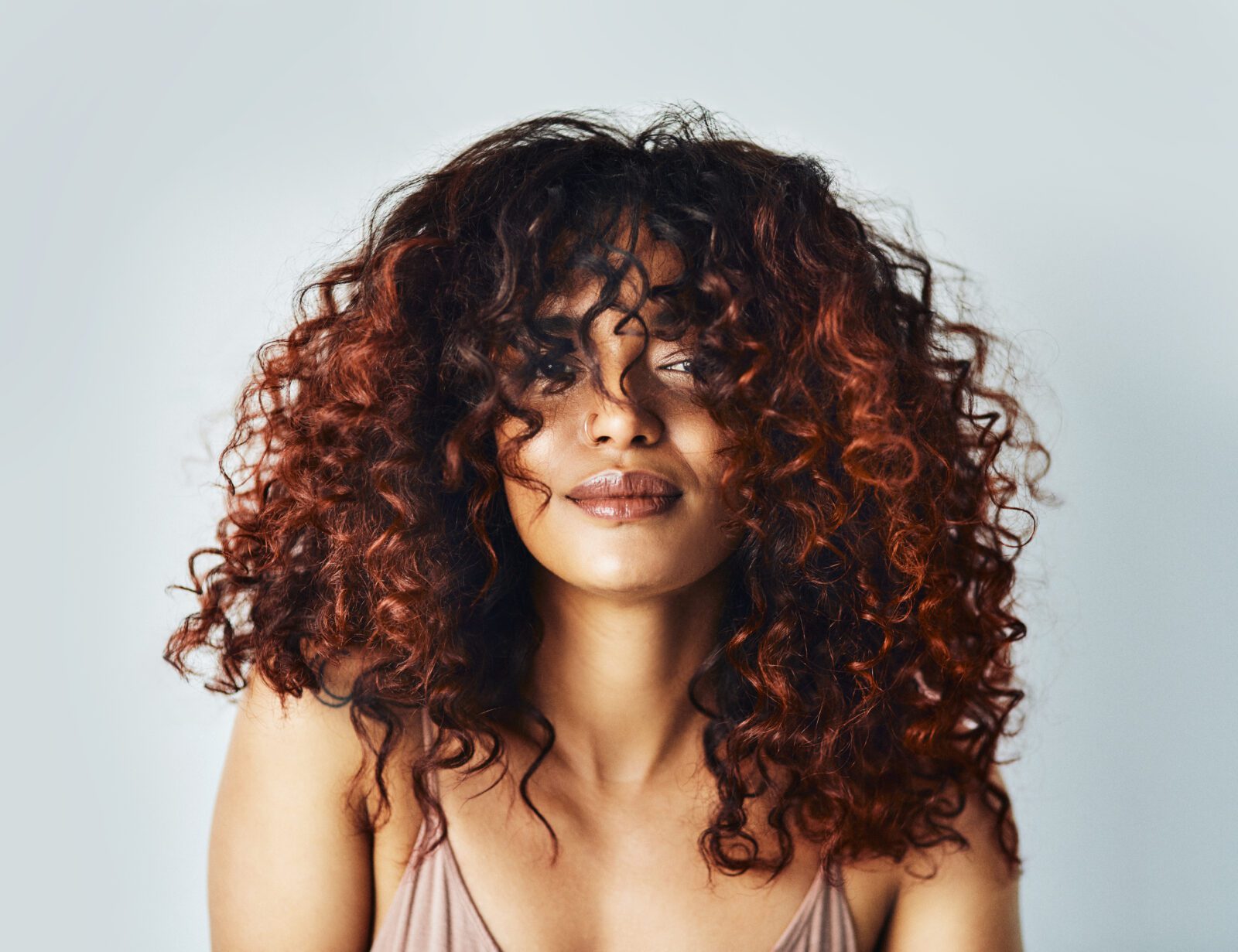
Hair is made up of a mixture of protein, moisture, lipids, pigments, minerals, and carbohydrates. Proteins help keep the hair strands strong, while lipids coat the hair to seal in moisture. Each strand of hair has three parts: the cuticle, the cortex, and the medulla.

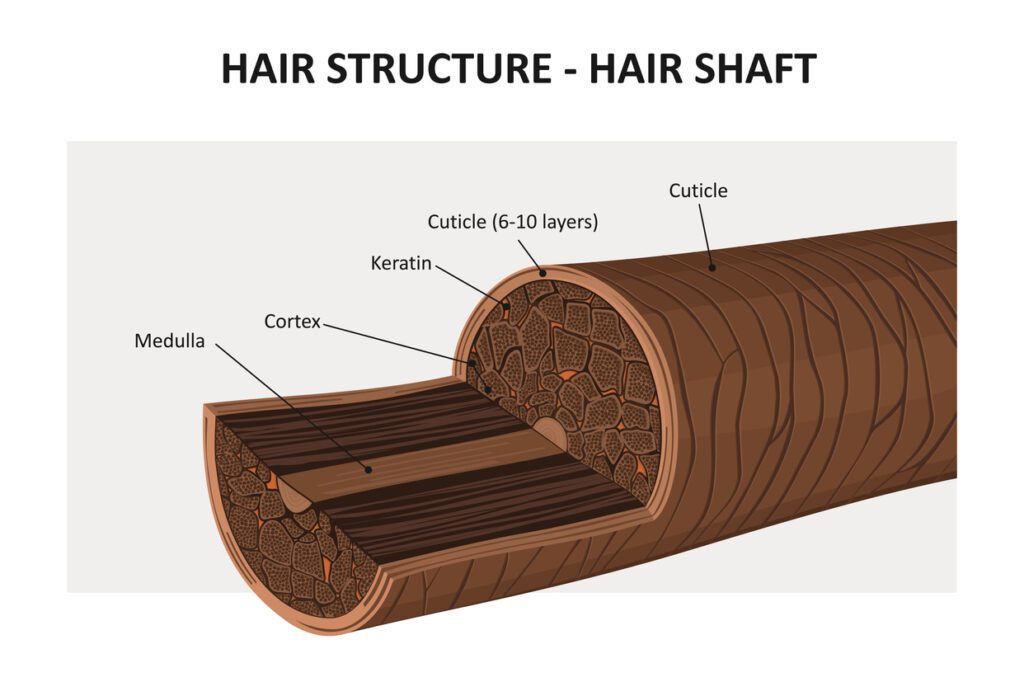
The outer layer of the hair is called the cuticle, this layer protects the hair strand. It has overlapping scales of keratin, a protein. In fact, 97% of hair is keratin. The cuticle is transparent in color, while the cortex (the second layer) holds the hair’s melanin and determines the color of your hair. The cortex also holds moisture. The cuticle is stronger than the cortex as it contains 100% matrix proteins, whereas the cortex contains 30% of matrix proteins and 60% fibrous protein.
The medulla or the core appears to be somewhat of a mystery as far as function goes because it is missing in some people’s hair. It is typically present in coarse hair and absent in fine hair.
The appearance of the hair, whether shiny or dull, depends largely on the health of the cuticle, the protective sheath of the hair.
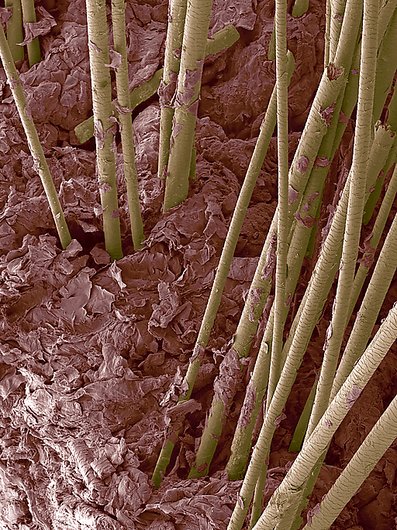
The cuticle layer can lift in the presence of water, or tighten due to the pH of our hair products. Healthy hair has a pH range of 5 to 5.5. At this pH range, the cuticle layer remains flat. Outside of this pH range, the cuticle layer reacts and the scales lift up. Every hair product you use has either an acidic, neutral, or alkaline pH, and your hair will react to that pH level by raising or tightening the cuticle layer.
For healthy, strong hair that grows long, the cuticles should stay flat as much as possible to avoid snagging. Therefore, it is best to use slightly acidic hair products on hair. Hair products, such as shampoo, conditioner, and styling products, should be within the 5 to 5.5 pH range to preserve the health of your hair.
Since most hair product manufacturers do not print the pH of their products on the label, you would have to test the pH of the products to ensure they’re suitable. For natural or chemically treated curly hair, pH balancing protects your hair’s cuticle layer.
SEM of human hair with damaged cuticles
What makes your hair unique?
The four main components that make your hair unique to you are:
- Density
- Texture
- Porosity
- Curl type or pattern
Hair Texture
This refers to the thickness or the circumference of individual hair strands. We sometimes have a combination of thin, medium, or coarse hair strands. Take a single hair strand between your fingers. What do you feel? or How does it feel? Is it thinner than a sewing thread? If it is, then you have fine hair. If you feel it slightly and it’s as thick as the thread, you have medium hair. If you can clearly feel the hair strand, you have a thick or coarse hair texture.
Hair Density
Density refers to how tightly packed individual hair strands are.
Can you easily see your scalp? You have a lower density – fewer individual hair strands. Fine hair, while easier to style, tends to not hold a style very well.
Can you see your scalp a little? Then you have hair of medium density. Medium density hair is easier to style and holds the style well.
Barely see your scalp or not at all? You have high density – in other words, thick hair. Thick hair holds curls well but can be more difficult to style.
If you have low density hair: avoid products that will weigh down your hair. Use lightweight products for nourishment and extra hold. We will help you choose products and techniques that stimulate hair growth and volume and prevent hair loss.
If you have medium or high density hair: use heavier products (think oils and butters) for increased shine and smoothness, and to nourish and moisturize.
Hair Porosity
Hair porosity refers to the hair’s ability to absorb and retain moisture.
The porosity of your hair is determined by the cuticle and its position. If the cuticle is in a raised position – moisture and products are easily absorbed, however, it can just as easily be lost if the cuticle remains raised. If the cuticle lays flat – the porosity is low, and it is more difficult for moisture to penetrate the hair strand.
Hair porosity is determined by a combination of genetics and hair treatments. Chemical treatments, coloring, and heat styling can affect your hair’s porosity by keeping the hair cuticle raised, which causes your hair to be dry as it is unable to retain moisture. Using a sealing hair oil can keep your hair more moisturized.
The following pinecone images illustrate the cuticle layer on hair strands.
Low porosity hair

- Smooth cuticles
- Healthy
- Moisturized
Medium porosity hair
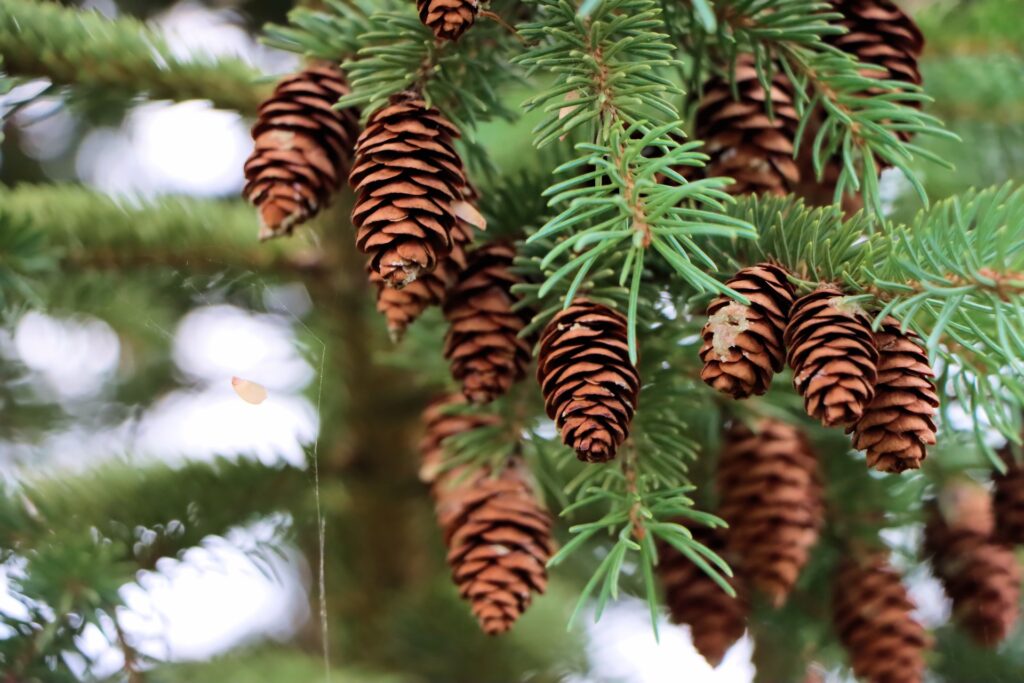
- Raised cuticles
- Slight damage
- Sufficiently hydrated
High porosity hair
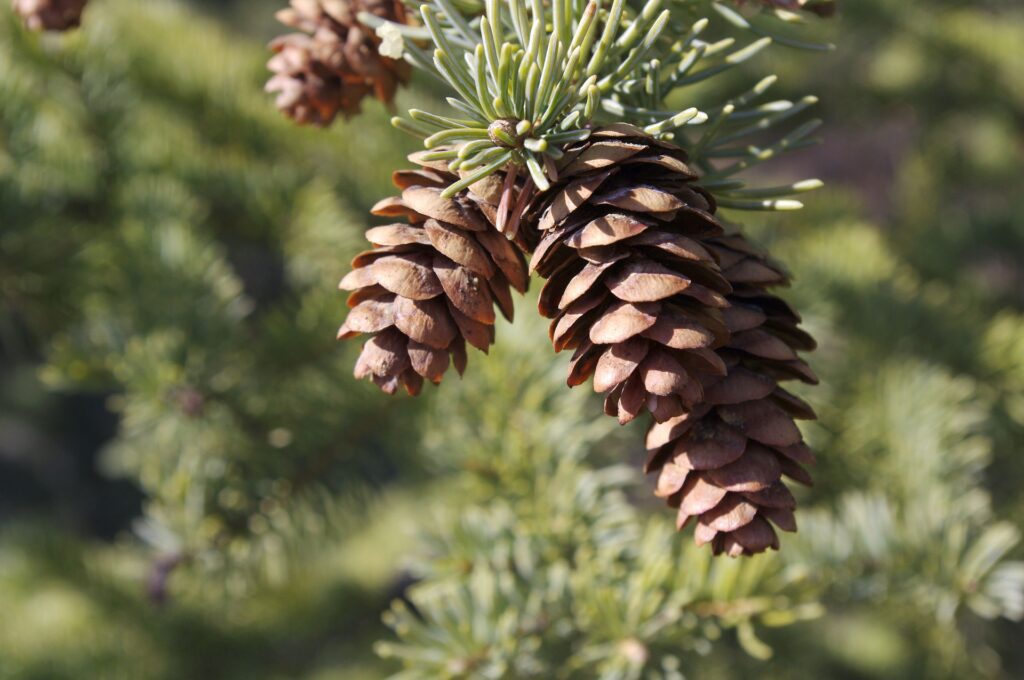
- Rough cuticles
- Medium to severe damage (ends)
- Dry – needs moisture
Determining how porous your hair is:
Many Internet sites recommend that you use the float test – floating strands of hair in a glass of water for 5 minutes to determine whether they sink or float. This test is not accurate due to several factors, such as water surface tension, natural oils from the scalp on the hairs, the texture of the hair, the age of the hair, whether the hair has been dyed, bleached, or otherwise chemically treated, product buildup, etc.
A more accurate test is the so-called spray bottle test. Use a Flairsol-type bottle since this provides a super fine mist that will make the test more accurate. To test your hair porosity – spray a section of hair – if beads of water sit on the shaft or roll off immediately – you have low porosity hair. There is minimal damage to your hair due to chemical treatments, sun exposure, or heat. You most likely have your natural hair color. And the hair has high elasticity.
If your hair soaks up the water after a second or two, you have normal or medium porosity hair. Your hair has most likely been moderately exposed to chemicals, coloring, and heated styling tools, and your hair may be lighter than its natural color. The hair is fairly elastic.
If the hair acts like a sponge and immediately soaks up the water – you have high porosity hair. If the hair is damaged, the elasticity may be poor. Sometimes our highlights and ends are high porosity while the rest of the hair is low or medium porosity.
Techniques for different porosity hair will be discussed in more detail elsewhere but here are some quick tips to remember.
Tips for low porosity hair
The cuticle is compact and smooth making it harder for the hair to absorb moisture. The best way to moisturize your hair is by using steam or a heat cap to raise the cuticles. You can also use a hot oil treatment. The heat will temporarily raise the cuticle allowing the moisture in before the cuticle compacts again – sealing the moisture in. This hair type typically requires products low in protein.

Tips for normal or medium porosity hair
Normal or medium porosity hair does not need as much maintenance compared to high or low porosity hair. You can deep condition without needing heat and use hair oils to seal in added moisture.
Tips for high porosity hair
If you have high porosity hair, the cuticles of your hair are rough and raised. This could be due to excessive exposure to coloring, chemical treatments, and/or heated styling tools. Your hair may have a frizzy appearance when dry, and is several shades lighter than its natural color. There is often poor elasticity to the hair. Avoid unnecessary heat, use regular deep conditioning treatments and finish with cold water to close the cuticles. You can also store your styler in the fridge and use it cold on your hair. Diffusing on high with cold air or air drying your hair will work best, as well as using a sealing hair oil. This hair type typically requires products higher in protein. Severely damaged hair should be trimmed off.
Hair porosity can change or vary under certain conditions:
- The length of your hair (the roots will be lower porosity than the ends of your hair, which are older and have usually been damaged more)
- As you age
- Extended and regular exposure to the sun
- Due to certain hair products used:
- The pH (acidity) in these products
- Colors or dyes
- Chemical relaxers
- Heat damage from flat irons and hair dryers
- Environmental factors such as the season, dew point, and the humidity in the air
Hair Porosity and pH
Your hair has a natural pH balance with virgin hair being slightly more acidic. Chemical treatments can push the hair from an acidic to a more alkaline state. A high pH substance raises the hair cuticle while a lower pH substance tightens it. You can use this knowledge to figure out what products to use on your hair. For example, on low porosity hair, more alkaline products such as baking soda washes will raise the cuticle and allow moisture in. Acidic products, such as vitamin C, will smoothen the cuticle and may dry out low porosity hair. On high porosity hair, highly acidic products such as apple cider vinegar, help seal the cuticle and lock in moisture. Protein treatments also help seal the cuticles and strengthen the hair. For further information about hair porosity, go here.
Hair Type or Pattern
Hair type is the least important factor but nice to know. The original hair typing system was created by Andre Walker, who is best known as Oprah Winfrey’s personal hairstylist. Over time, additional subcategories were added. The hair typing system divides the hair into four different types with three subcategories, a-c, based on the diameter of the wave, curl, or coil:
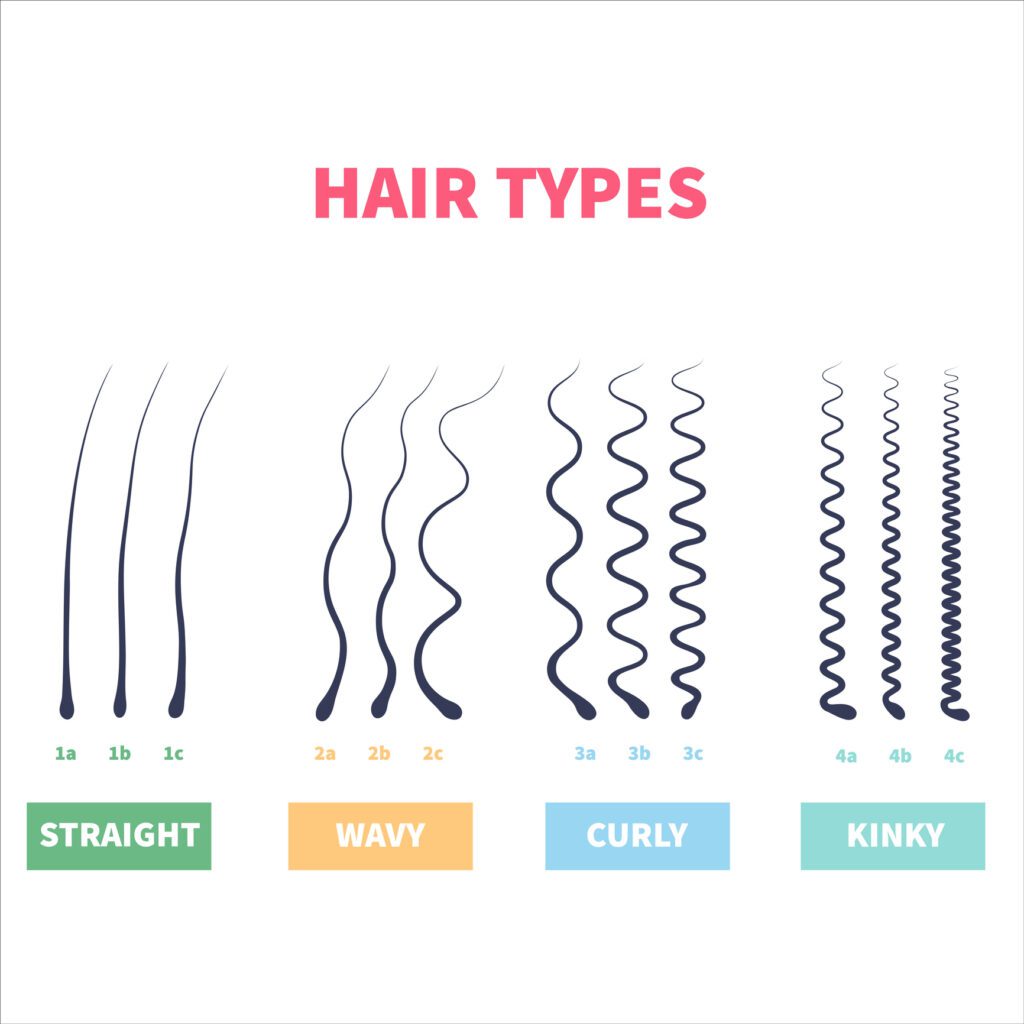
Type 1: Straight Hair
With straight hair, the cuticle hugs the cortex very tightly and the scales lay flat. Sebum can easily slide down the hair shaft. This makes straight hair shinier and more moisturized (oily). This hair type is more resilient and extremely difficult to curl.
Type 2: Wavy Hair
Type 2 hair falls between straight and curly hair with regards to texture and sheen. It is prone to frizz and tends to lose curl definition easily. The hair strands have an S pattern which can be closer to the head or throughout the hair depending on the sub-category. This type of hair is somewhat resistant to styling.
Type 3: Curly Hair
This type can range from loose spiral curls to tight corkscrew curls. The curls are more receptive to styling methods as they are not tightly packed. However, curly hair is prone to dryness, breakage, and frizziness because the cuticle is naturally raised and doesn’t lay flat. This results in less shine and also a less smooth hair strand. The raised cuticles also cause the hair to tangle easier and look frizzier. Added moisture is essential for keeping the curls well-formed and to prevent frizz.
Type 4: Coily Hair
Even though this type is known as the ‘curliest’ type of hair, there is often no visible curl pattern. This is because the hair strands form a Z pattern instead of the S pattern found in the other curly hair types. This hair type may be fine and especially fragile and often has a high density. It can appear much shorter than it actually is because the hair is tightly coiled making it shrink more. Type 4 hair needs a lot of added moisture as it frequently has fewer cuticle layers.
Sources We Find Useful:
- https://www.thewildcurl.com/blogs/go-curly-hair-blog/how-to-determine-your-hair-porosity
- https://www.thewildcurl.com/blogs/go-curly-hair-blog/curly-hair-101-how-to-figure-out-your-curl-pattern
- https://www.devacurl.com/blog/devacurl-101-the-structure-of-hair/
- https://discover.hubpages.com/style/Healthy-Hair-Essentials-Conditioner
- https://www.lorealparisusa.com/beauty-magazine/hair-care/all-hair-types/what-is-hair-made-of-structure-anatomy.aspx
- https://www.devacurl.com/blog/devacurl-101-the-structure-of-hair/
- https://www.hairstory.com/stories/2020/05/01/what-is-my-hair-type/)
- https://quicksilverhair.com/the-ultimate-guide-to-hair-porosity-does-it-really-matter/?fbclid=IwAR2T96W4Sl8QzmdD7EOL4FqjyFbJYuW7QaWSJf6N-4PlARwtW30phZHxrhk


